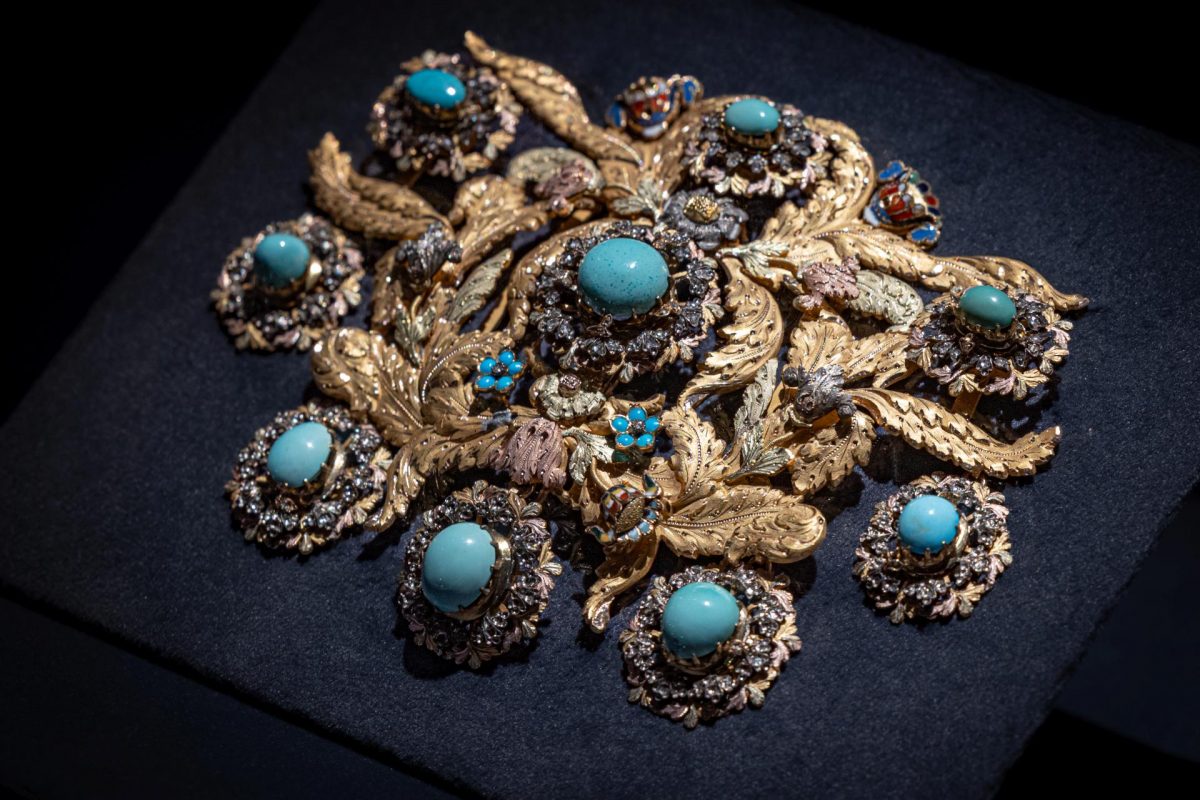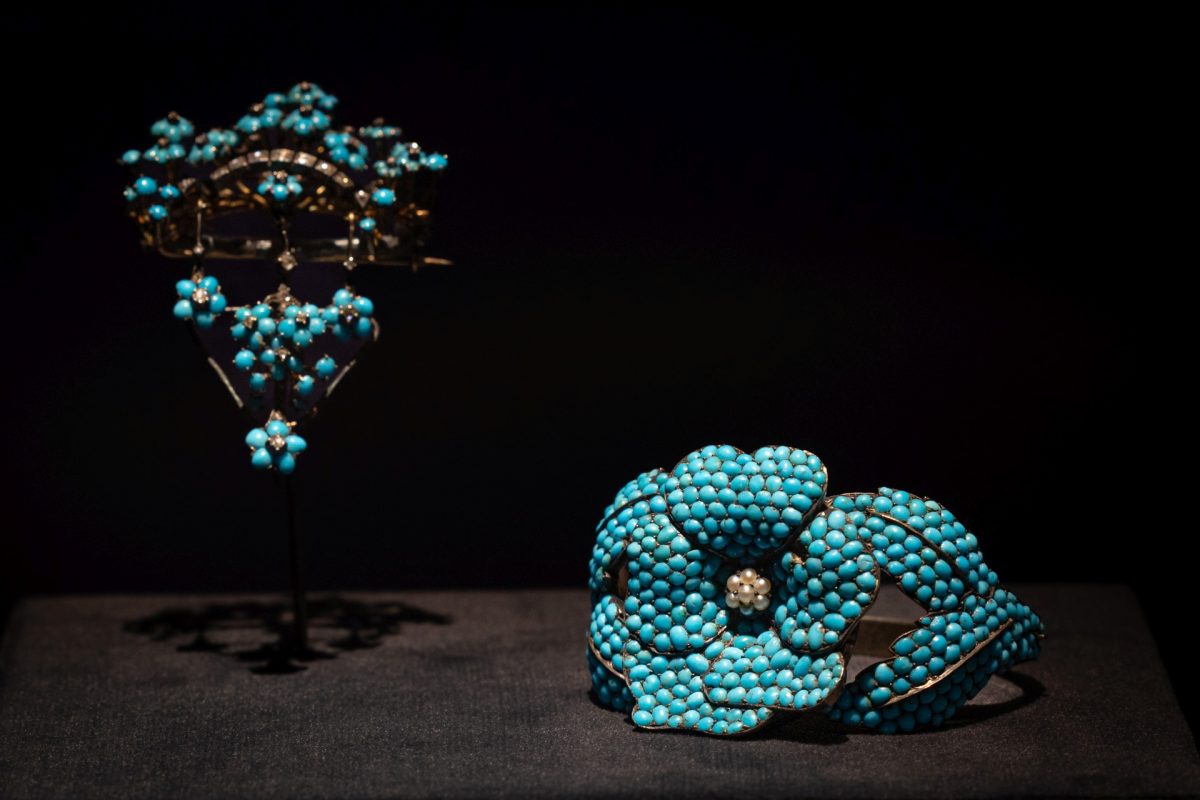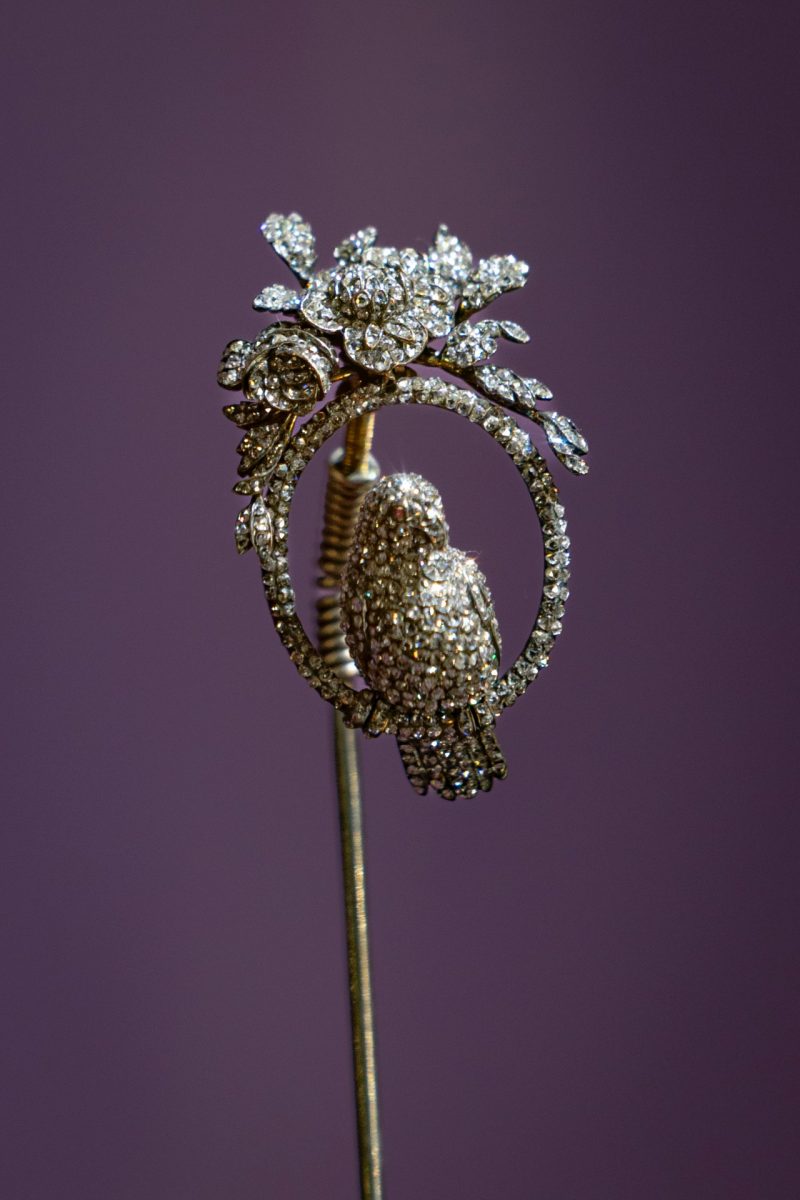What were the fashion choices of Russian empresses — their preferred styles and favorite designers? Join us for a tour of the Jewels! The Splendor of the Russian Court exhibition with costume and fashion historian Tatiana Nagorskikh.
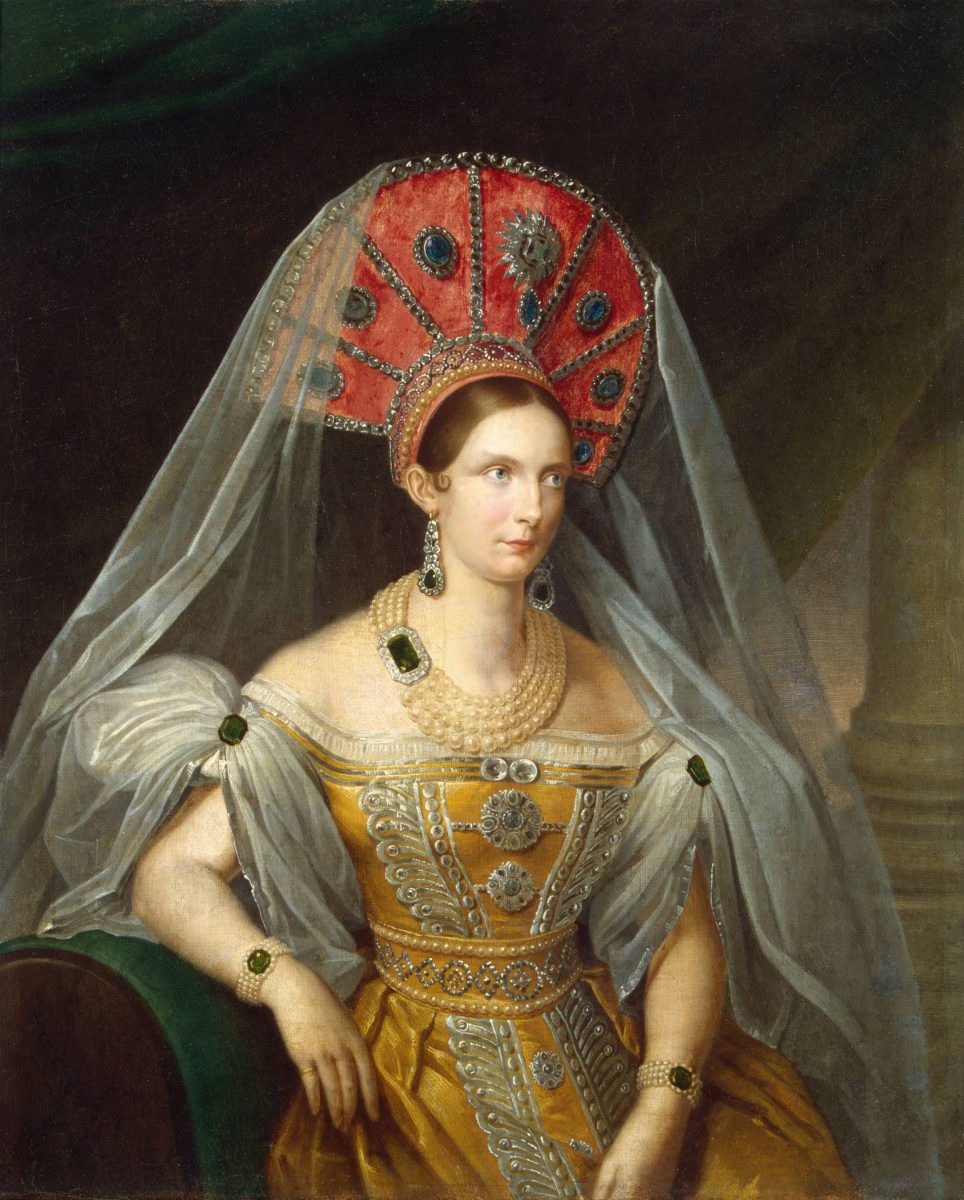
Russia had many empresses, each with her own distinct fashion sense. Yet there were certain common rules they all followed. Since Elizabeth Petrovna’s reign, coronation gowns were crafted exclusively from silver or silk brocade (fabrics with silver threads woven into them during production). The Empress issued several decrees governing court ladies’ attire, down to their hairstyles. For instance, they were strictly forbidden from adorning the right side of their hairstyles with decorative pins — a privilege reserved solely for Elizabeth Petrovna. The current exhibition in Moscow’s Historical Museum features zitternadels, precious spring-mounted hairpins that belonged to the Empress herself. It’s well documented that she never wore the same dress twice and, depending on her schedule, changed outfits at least three times daily. Elizabeth Petrovna used her magnificent appearance to showcase the Russian Empire’s grandeur. Sadly, most of her wardrobe was destroyed in the great fire at the Summer Palace in 1753. Of an estimated 14,000 dresses, only one coronation gown survives today, now housed in the Moscow Kremlin Museums.
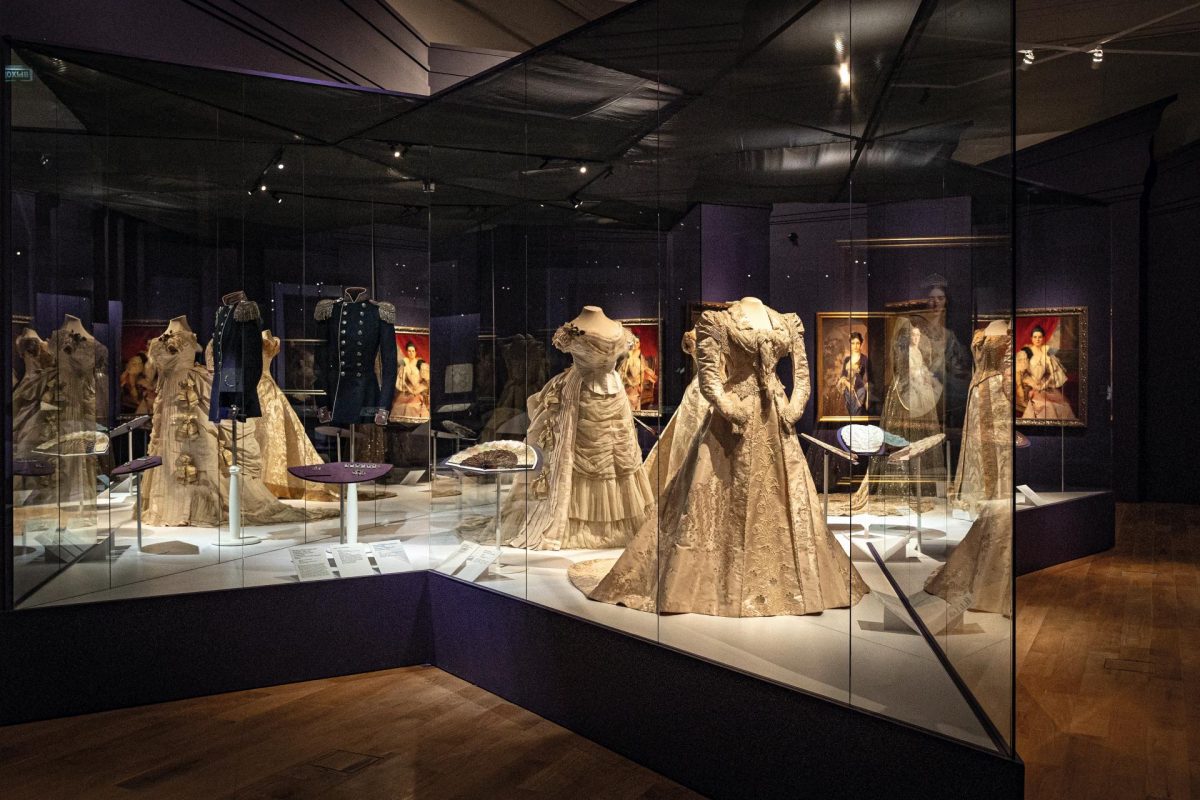
The same museum holds Catherine II’s coronation attire. Unlike Peter I, who dressed boyars in European fashion, she popularized the so-called Russian dress. Though German by birth, Catherine positioned herself as a Russian empress and believed in cultivating national identity among her subjects. She began by posing for artists wearing kokoshniks and sarafan-style outfits. She then issued a decree requiring all court ladies — hofmeisterins, ladies-in-waiting, and maids of honor — to wear à la russe dresses. These dresses typically featured an embroidered central panel. They also had long, flowing sleeves that draped from the shoulders down the back. This design symbolically referenced pre-Petrine royal, princely, and boyar clothing. The Russian dress, in various forms, remained ceremonial attire until the monarchy’s final days.
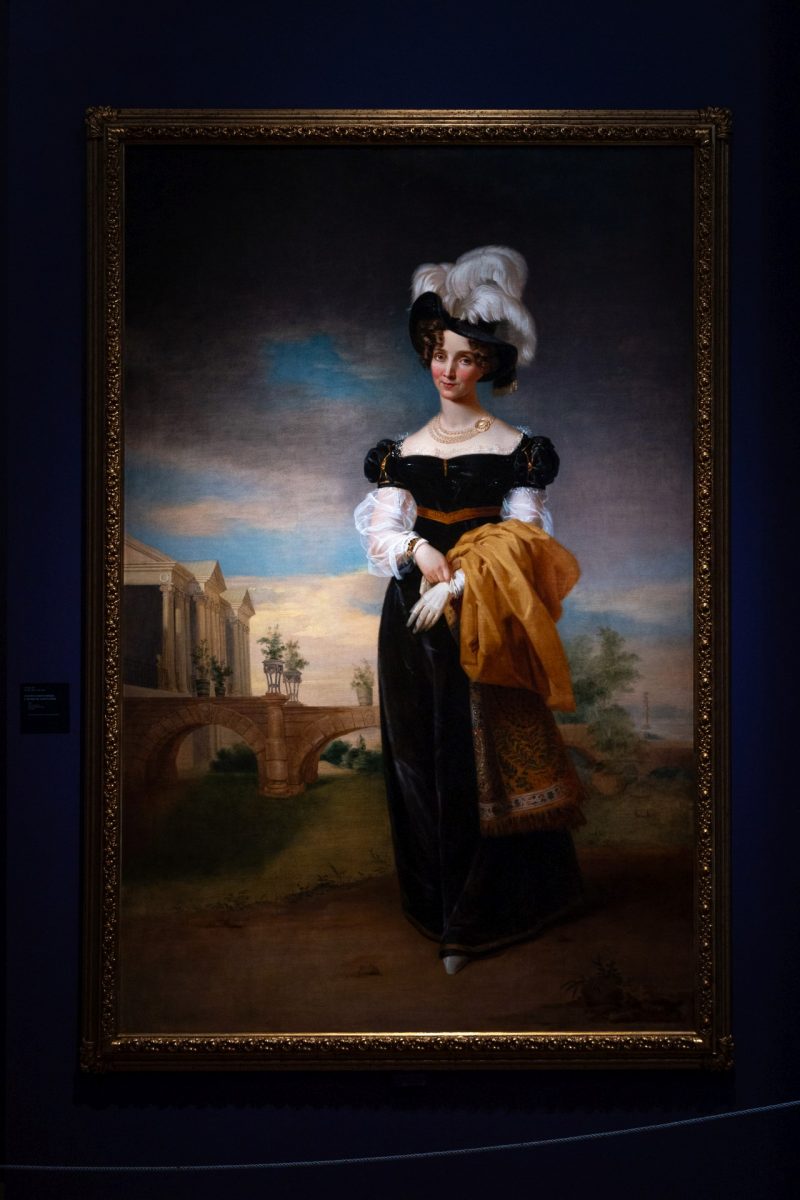
The exhibition primarily focuses on the last two empresses — Maria Feodorovna, Alexander III’s wife, and Alexandra Feodorovna, Nicholas II’s wife. In terms of style, they were complete opposites. Maria Sophia Frederica Dagmar, a Danish princess, was strikingly beautiful with brown hair, brown eyes, and a delicately petite figure. Remarkably, she maintained a 65-centimeter waist even after bearing six children. Contemporary accounts tell how, even in her later years, she could dance nearly all night at balls and still look as fresh as a May rose. Maria Feodorovna loved horseback riding, swimming, and could easily do cartwheels. She enjoyed making an impression, and her wardrobe played a crucial role in this. She commissioned dresses from the renowned designer Charles Worth, founder of House of Worth and pioneer of haute couture. The exhibition features one of Maria Feodorovna’s dresses created by Worth himself — a particularly valuable piece. Historical records show the empress ordered Worth gowns as needed, sometimes by telegram, with individual dresses costing between RUB 500–700. These were primarily evening and ball gowns.
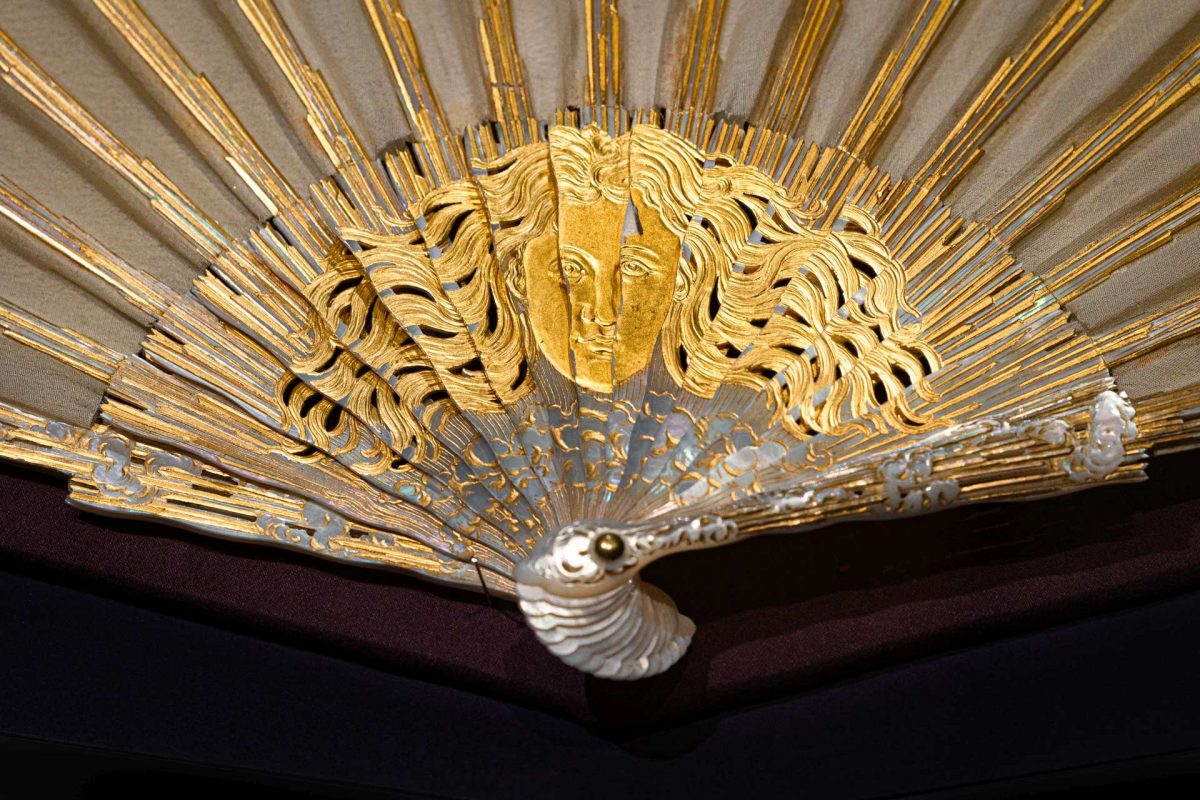
Ceremonial attire, however, was mainly created in Russia, often using fabrics from Moscow’s famous A. & V. Sapozhnikov firm, at Olga Bulbenkova’s fashion house or Avdotya Ivanova’s workshop in St. Petersburg. Gold embroidery was executed in specialized workshops or monastery ateliers.
Empress Alexandra Feodorovna was more reserved and austere than her mother-in-law. Born Princess Alice, the Grand Duchess of Hesse-Darmstadt, she was raised in Queen Victoria’s court in an ascetic environment that profoundly shaped her character and style. She disliked balls and avoided what we now call “networking.” While Maria Feodorovna embraced bold colors like cranberry and deep purple (an evening gown with gradient effects is on display), Alexandra Feodorovna preferred subdued, powder-soft shades. This reflected the changing times — the Art Nouveau era — which found perfect expression in the last Russian empress’s style. Her outfits were luxurious yet understated: pastel tones with her signature pearls. Though entitled to the finest gemstones by her position, she often chose “unconventional” René Lalique pieces crafted in enamel. Examples of the renowned French jeweler’s work, along with dresses from Auguste Brisac’s workshop (the empress’s preferred designer), are on display at the Historical Museum.
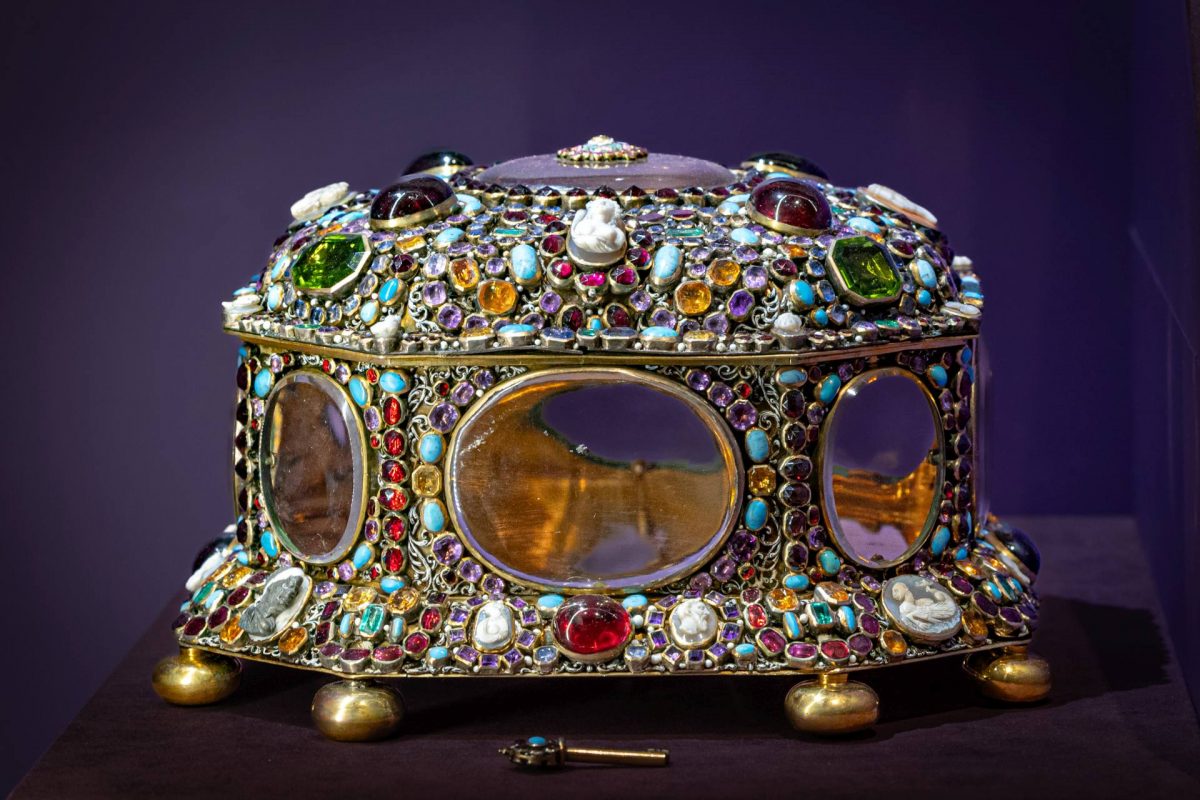
Photo: press-office, Vostock Photo
